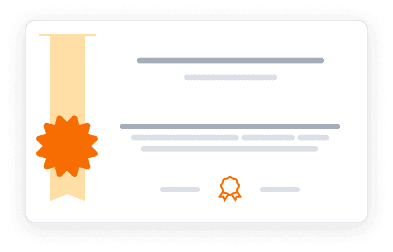This course is part of Modeling and Control of Power Electronics.
This course cannot be purchased separately - to access the complete learning experience, graded assignments, and earn certificates, you'll need to enroll in the full Modeling and Control of Power Electronics Specialization program. You can audit this specific course for free to explore the content, which includes access to course materials and lectures. This allows you to learn at your own pace without any financial commitment.
4.7
(79 ratings)
8,671 already enrolled
Instructors:
English
What you'll learn
Model and analyze switched-mode power converters
Design closed-loop regulated power systems
Apply feedback theorem to practical designs
Master averaged-switch modeling techniques
Verify designs through simulation
Skills you'll gain
This course includes:
4.6 Hours PreRecorded video
14 quizzes
Access on Mobile, Tablet, Desktop
FullTime access
Shareable certificate
Get a Completion Certificate
Share your certificate with prospective employers and your professional network on LinkedIn.
Created by
Provided by

Top companies offer this course to their employees
Top companies provide this course to enhance their employees' skills, ensuring they excel in handling complex projects and drive organizational success.





There are 3 modules in this course
This course focuses on practical design-oriented modeling and control of pulse-width modulated switched mode power converters. Students learn Middlebrook's feedback theorem for voltage regulator analysis, circuit averaging, and averaged-switch modeling techniques. The curriculum covers hand analysis, computer-aided analysis, and simulations of converters, preparing students for high-performance control loop design in power electronics applications.
Modeling, Control and Simulation of Switched-Mode Power Converters
Module 1 · 6 Hours to complete
Techniques of Design Oriented Analysis: Feedback Theorem
Module 2 · 4 Hours to complete
Averaged Switch Modeling and Averaged Circuit Simulations
Module 3 · 5 Hours to complete
Fee Structure
Individual course purchase is not available - to enroll in this course with a certificate, you need to purchase the complete Professional Certificate Course. For enrollment and detailed fee structure, visit the following: Modeling and Control of Power Electronics
Instructor
Charles V. Schelke Endowed Professor
Dr. Dragan Maksimovic is a distinguished Charles V. Schelke Endowed Professor in the Department of Electrical, Computer, and Energy Engineering at the University of Colorado Boulder. He earned his B.S. and M.S. degrees from the University of Belgrade and completed his Ph.D. at the California Institute of Technology in 1989. Since joining CU Boulder in 1992, he has co-founded the Colorado Power Electronics Center (CoPEC), where he serves as Co-Director, focusing on research in smart power electronics and digital control for high-frequency switched-mode power converters. His work has garnered significant support from various industrial sponsors and government agencies, including NSF and DARPA.Dr. Maksimovic is a recognized leader in the field of power electronics, having published over 250 papers and holding more than 30 US patents. His research interests include renewable energy systems, energy efficiency, and advanced power conversion technologies using wide bandgap semiconductors. He has co-authored influential textbooks such as Fundamentals of Power Electronics and Digital Control of High-Frequency Switched-Mode Power Converters. A Fellow of the IEEE, he has received numerous awards for his contributions to engineering education and research, including the IEEE PELS Modeling and Control Technical Achievement Award. Through his teaching and innovative research, Dr. Maksimovic continues to shape the future of power electronics and energy systems at CU Boulder.
Testimonials
Testimonials and success stories are a testament to the quality of this program and its impact on your career and learning journey. Be the first to help others make an informed decision by sharing your review of the course.
Frequently asked questions
Below are some of the most commonly asked questions about this course. We aim to provide clear and concise answers to help you better understand the course content, structure, and any other relevant information. If you have any additional questions or if your question is not listed here, please don't hesitate to reach out to our support team for further assistance.



